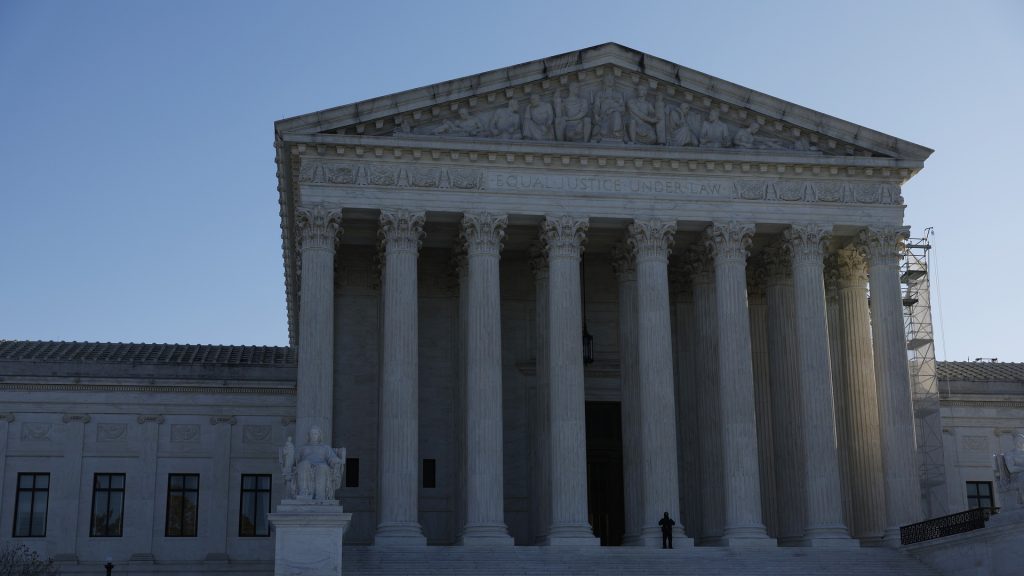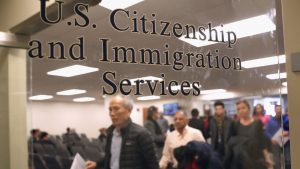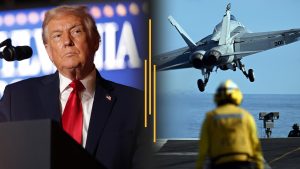These Supreme Court cases could shape the future of the American presidency

It’s the first Monday in October, so the nine justices of the U.S. Supreme Court returned to the bench for a new term that may be dominated by President Donald Trump and his use — or abuse — of executive power. As Trump and the nation’s highest court go head-to-head on numerous legal questions, the outcome could shape the future of the American presidency.
Out of thousands of cases, the Supreme Court hand-selected 34 to hear this session. Experts say pivotal cases will determine the president’s authority, including Trump’s tariffs on hundreds of nations. Another case will decide whether Trump has the power to fire employees from agencies that are supposedly independent of the Oval Office.
“These are both really core parts of the president’s agenda,” said Amy Howe, a Supreme Court analyst for PBS NewsHour and co-founder of SCOTUSBlog.
Some experts believe the court could rule against the Trump administration in the case involving tariffs. But the court’s emergency rulings on a number of cases involving Trump during the summer recess may indicate a willingness to grant him an unprecedented degree of presidential authority.
Can Trump impose tariffs?
In order to impose tariffs on hundreds of countries, Trump cited the International Emergency Economic Powers Act (IEEPA) in the name of a “national emergency.”
Last month, legal and trade experts surveyed at a J.P. Morgan conference in London predicted the Supreme Court is 70% to 80% likely to rule against Trump. The experts believe the court will likely side with the Court of International Trade, a federal appeals court and a federal district court that all found the tariffs to be unconstitutional.
In J.P. Morgan’s survey, experts suggested Supreme Court justices may not vote along their political or ideological divides.
“While the sitting three liberal justices are expected to oppose IEEPA tariffs, Chief Justice [John] Roberts and Justice [Amy Coney] Barrett — both with pro-business leanings — may also side against,” the note from J.P. Morgan read.
The analysis of the survey suggested that Justice Brett Kavanaugh — who has voted with the majority 90% of the time — is considered the swing vote in the tariff case.
“Legal experts point out that none of Trump’s three appointed justices is distinctively ‘Trumpy,’ and they have been less predictable than Republicans had hoped,” the J.P. Morgan note said.
However, in other cases, some observers believe the court has already revealed its leanings through its emergency docket.
Shadow docket revisited
Despite being on a summer-long hiatus, the Supreme Court remained active through the so-called shadow docket, which allows for swift rulings on “emergency” matters that do not require much explanation. This year, the court issued more emergency rulings than at any other time in its history.
Most of the emergency rulings — in cases that involved such matters as mass firings of government employees, agency funding cuts and immigration — were in favor of the Trump administration.
“The court handed down the latest, the 23rd consecutive ruling for President Trump granting emergency relief, this one clearing the way for [Homeland Security Secretary Kristi] Noem to cancel something called temporary protected status for Venezuelan migrants,” Stephen Vladeck, a constitutional law professor at Georgetown University, said on Oct. 3. “We have seen rulings clearing the way for the elimination of transgender service members, clearing the way for the firing of all kinds of senior federal officers, Department of Education employees, for the pocket rescissions of $4 billion of foreign aid funding.”
Some of these rulings could be revisited by the Supreme Court, with other similar cases added throughout the 2025-2026 term.
“I think that this court will generally continue to move to the right,” Howe said.
Can the president fire federal officials?
That ideological shift may be most visible in a case involving the president’s authority to fire officials of congressionally created independent agencies.
“The most important cases involving Trump are the cases involving Trump’s ability to fire supposed independent government workers Lisa Cook and Rebecca Slaughter,” Zack Smith, a senior legal fellow at the conservative Heritage Foundation, told Straight Arrow News, referring to the Federal Reserve governor and the Federal Trade Commission (FTC) member, respectively.
Trump sought to fire Cook over allegations of mortgage fraud involving claims that two homes were her primary residences. Cook has denied wrongdoing, and no criminal charges have been filed. The Supreme Court recently ruled that she could remain on the Fed while her lawsuit challenging Trump’s firing is resolved.
While the 1913 Federal Reserve Act shields the nation’s central bank from political interference, it also states that employees can be removed “for cause.” The case could determine whether the central bank remains independent of the executive branch. Arguments in the case are expected early next year.
A similar case examines Trump’s removal of Slaughter from the FTC. Last month, the Supreme Court issued a temporary decision to maintain her termination before scheduled arguments in December. If the court rules that the president has the power to fire commissioners of independent agencies without cause, it could lead to the overturning of a legal precedent set by Humphrey’s Executor v. United States.
“These are very, very important cases,” the Heritage Foundation’s Smith said. “The Humphrey’s case from the 1930s is controversial: It says the president cannot fire supposed independent government employees, he doesn’t have control. … If Humphrey’s is overturned, this could have broad implications for Lisa Cook, Rebecca Slaughter and other independent agencies.”
Smith continued, “If the court overturns the Humphrey’s Executor case, it would make clear that any president has the ability to run the entire executive branch of government, not just certain portions and pieces of it.”
The post These Supreme Court cases could shape the future of the American presidency appeared first on Straight Arrow News.





